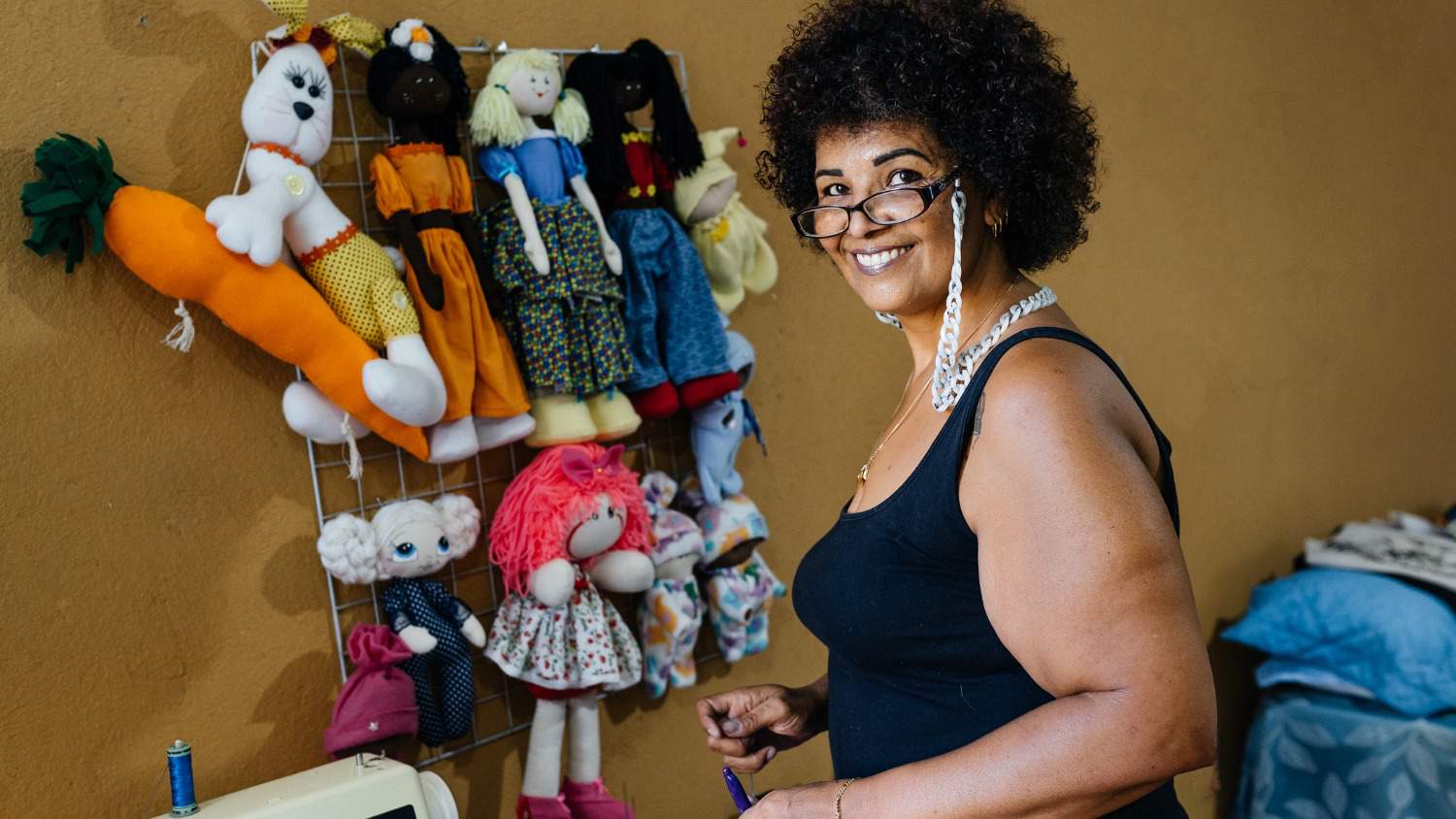
Is It Possible to Brand My Small Business?
These days, branding is a word that is bandied about freely. Everyone, from celebrities to wanna-be influencers, is trying to brand themselves or their business. You may be thinking, That’s okay for famous people or big businesses but what about my small business – how does branding pertain to me?
What Is Branding?
Branding is everything you do consistently and across the board each time you appear online or in person, whether you are networking, creating a website, publishing posts, advertising, or working on your social media.
Branding consists of:
Visual Branding
- Fonts
- Color Palettes
- Relevant Images
- Iconography
- Videos
- Logo
Brand Voice
- Your voice
- Your story
- Your tag or theme line
- Your content
What Branding Is NOT
A couple of years ago, I got a call from two executives who were spinning off from their corporate employers. They actually asked me if they should invest their money in a logo or a website. My answer, as always, is that your website is your greatest online business asset. A logo is something that makes your business recognizable, but in itself is meaningless (think Starbucks).
The days of slapping a logo on your website, business cards, and marketing materials and calling it branding is long gone. Instead, you must think comprehensively to every aspect of your business.
What Can I Hope to Achieve by Branding My Business?
Your goal is to create a memorable experience for the consumer. Something that they will love, choose, or identify with. A product is never thought to be just a product. Instead, it should connote a lifestyle and confer that identification on the user.
Likewise, services should never simply be listed on your website or marketing materials. The content you use to describe your various services should answer questions and solve problems for the user.
How Does Branding Help Small Businesses?
- Branding makes your business recognizable
- Branding generates leads and customers
- Branding creates trust
- Branding makes your business scalable
- Branding supports your marketing efforts
Where Do I Begin the Branding Process?
Begin by creating a user profile of your targeted audience. Think about whom you are speaking to. Create an ideal buyer persona (or more than one) consisting of:
- Gender / Sex
- Age
- Location (urban, suburban, rural, national, international, regional etc.)
- Education
- Income
- Job / Career
- Marital / familial status
- Communication preferences
- Goals
- Problems / Challenges
- Why they would, or wouldn’t, buy your service or product
This step will define everything that comes afterward, such as your brand colors, brand images, and brand voice. The more you know about your targeted audiences, their habits and preferences, the fewer marketing mistakes you will make. Build it and they will come is magical realism in action. Appeal to them a priori and you will have a recipe for success.
What Are My Next Steps?
Presumably, you have already researched your market and competitors. After building your ideal consumer profile, you will define your brand position, your brand proposition and brand identity:
Your Value Proposition
What are all the things you plan to do better than your competitors? Will you offer better pricing, better service, or a better product?
Your Brand Position
This is a statement that defines your position in the market and your brand personality.
Brand Identity
Do a Google search for a list of adjectives to help you choose your identity. For example, green and eco; reliable and dependable; exclusive and luxurious.
Your Brand Voice
This is the voice you will use when speaking to your customers. Are you speaking to women or men, young or old, sophisticated or unpretentious, a utilitarian or a luxury market?
Why Is Choosing the Right Brand Colors So Important to My Success?
It is estimated that 60-90% of all judgements are made on color alone. Choosing the right color palette for your products, website, and marketing materials is going to be crucial to your success. The advertising industry has spent billions of dollars on researching colors and their psychological connotations.
Furthermore, each sex and generation has been found to have its own marked color preferences:
- Boomers – azure, greenish-blue, jade green, grey lavender, sophisticated purples, and silver
- Generation X – indigo, violet, shades of green, black, sandy colors and charcoal greys
- Generation Z – Cheerful pastels and yellow
- Millennials – soft tonal colors, like dusty pink, cantaloupe, blush, lavender and /or bright supersaturated colors
But color will further be honed by the industry you are in and by feelings that you want to evoke. In 2017, I did a website for a medical spa. Until then, most of the medical spa websites in Chicagoland featured images of super skinny white women in their early 20s and were primarily styled in shades of blue. I can only presume that was the case because spas are associated with water.
In any case, I implemented a palette of soft grey, white, camel, sand and gold that sets off all flesh tones and has a sophisticated urban feel. I also used images of women of all races and colors. Though the targeted demographics were Generation X and Boomer women, I used photos of all ages and shapes. Now every medical spa website in Chicago is more or less a variation of that design.
Fonts Are Also Crucial to Branding
Fonts will also evoke a mood and say much about your business or product. Generally, you should use three fonts or less on your website and even fewer in your collateral marketing pieces. You will want a clean look and not to end up with a product that looks like a ransom note. The three fonts you should use:
- Primary font – it’s associated with your brand identity, logo, and often used in your hero section and/or headings.
- Secondary – for the body of your copy. It should be clean and easy to read.
- Tertiary – or accent font – you decide where to use it.
These two or three fonts need to work together. Additionally, you can change the weight, style, color, and spacing of a font to either make two to three fonts look more cohesive or style one font for more variety. You can also italicize a font or put it all into capitals.
Brand Images
As a society, we are moving away from the printed word and towards images and video. You must be consistent about choosing or creating your brand images. They will define the way you are perceived across your website, products, and social media.
Quality and authenticity come first. If you can, do hire a local photographer to take images of you, your team, your business, and your product. Never use stock photos to represent you or your business. People will want to know who you are. Be authentic, transparent, and above all don’t use a photo from 20 years ago.
Branding Your Website
Your website is one of your most important business assets. Many business owners either don’t have a website or have one that is not working. The design and layout of your website should be created to achieve your goals whether they are sales, lead generation, boosting your reputation, describing your expertise or a combination of the above.
Using the proper images, colors, fonts and speaking to your potential client base using your brand voice will set the stage for your success. Think about what your images and colors evoke subconsciously in the end user.
A friend of mine in the computer industry is building an innovative app. He is also building his own website. On it, he is using newspaper cut outs from the 50s. I’m not sure what he is trying to achieve but it isn’t saying cutting edge technology.
Lastly, You Can Concentrate on Your Logo
Now that you know who your targeted audience is and which images, colors, and fonts will appeal to them, you can concentrate on the design of your logo. The style, typography, and colors should be consistent with the elements we discussed.
The image should look as good on your website as it does on your business card and marketing materials. It is much easier to start from the bigger items and work your way to the logo than to try to craft your branding around the logo.
Next time we will talk about your brand voice and telling your story so that it appeals to your audience.
Let’s Have a Conversation:
Do you have a passion or small business that you’ve been trying to brand? How has that worked for you so far? What difficulties have you faced or are you facing? What part of branding has been easy for you? Have you hired help and what was the result?
Tags Small Business






